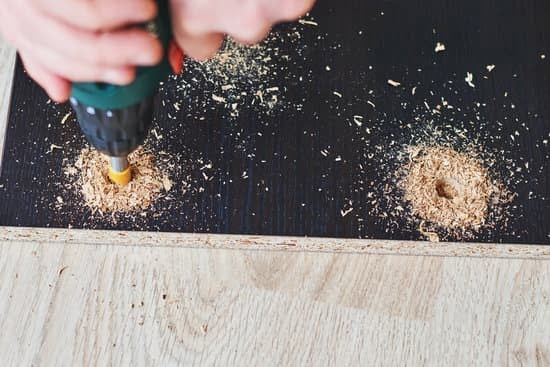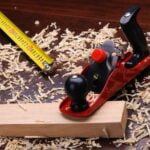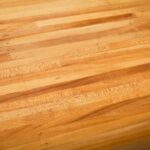Sassafras wood, known for its unique qualities and versatility, is a popular choice among woodworkers for various projects. One common question that arises in woodworking circles is, “Is sassafras wood good for woodworking?” In this article, we will delve into the characteristics, pros and cons, applications, tips for working with sassafras wood, sustainability aspects, comparisons to other woods, and showcase real-life examples of stunning woodworking projects using this distinct material.
Sassafras wood comes from the Sassafras tree native to North America. Its grain pattern varies from straight to wavy, with colors ranging from pale yellow to olive green. The texture of sassafras wood can be coarse or fine depending on the specific piece. These characteristics make it a visually appealing option for woodworking projects seeking a rustic or natural look.
While sassafras wood offers unique aesthetics, it also presents both pros and cons when used in woodworking. Its lightweight nature makes it easy to work with hand tools and machinery. However, it is not as durable as other hardwoods and may be prone to decay if not properly treated. Understanding these attributes can help woodworkers make informed decisions when incorporating sassafras wood into their creations.
Characteristics of Sassafras Wood
Sassafras wood, derived from the sassafras tree, is a unique and versatile material that is commonly used in woodworking projects. One of the key characteristics of sassafras wood is its distinct grain patterns, which can range from straight and uniform to wavy and irregular. The grain of sassafras wood adds a touch of natural beauty to any woodworking project, providing a visually appealing finish.
In terms of color, sassafras wood offers a warm and rich tone that ranges from creamy white to light brown with hints of red and orange hues. This variation in color adds depth and character to furniture pieces, cabinetry, and decorative items crafted from sassafras wood. Additionally, the texture of sassafras wood is generally smooth and easy to work with, making it suitable for a wide range of woodworking techniques.
Despite its appealing characteristics, there are some considerations to keep in mind when working with sassafras wood. Due to its softer nature compared to other hardwoods, like oak or maple, sassafras wood may be more prone to denting or scratching over time.
However, this softness also makes it easier to carve and shape, allowing for intricate designs and detailing in woodworking projects. Overall, the unique combination of grain patterns, warm color tones, and smooth texture make sassafras wood a desirable option for woodworking enthusiasts looking for something different.
Pros and Cons of Using Sassafras Wood for Woodworking Projects
Sassafras wood, a lesser-known choice in the world of woodworking, offers both advantages and disadvantages to those considering it for their projects. Understanding the pros and cons of using sassafras wood can help woodworkers make informed decisions when selecting materials for their creations.
Some benefits of using sassafras wood include its lightweight nature, which makes it easy to work with and ideal for projects where weight is a concern. Additionally, sassafras wood boasts a unique grain pattern that adds character to finished pieces. Its light brown to yellowish color with green undertones can bring warmth and depth to furniture and other items.
On the other hand, one potential drawback of using sassafras wood for woodworking is its tendency to warp or shrink over time if not properly seasoned. This means that extra care must be taken during the drying process to prevent these issues from occurring. Furthermore, sassafras wood can be more susceptible to insect damage compared to other hardwoods, making regular maintenance essential to preserve the integrity of the finished piece.
When deciding whether to use sassafras wood for woodworking projects, consider these pros and cons carefully in relation to your specific needs and preferences. With proper preparation and maintenance, sassafras wood can be a rewarding choice that adds a unique touch to your creations.
Common Applications of Sassafras Wood in Woodworking
Sassafras wood, known for its unique characteristics and versatility, is gaining popularity among woodworkers for various applications. While it may not be as commonly used as other hardwoods like oak or maple, sassafras wood offers a range of benefits that make it suitable for different woodworking projects.
Furniture Making
One of the most common applications of sassafras wood in woodworking is furniture making. Due to its lightweight nature and excellent workability, sassafras wood is often used to create chairs, tables, cabinets, and other types of furniture. Its distinct grain patterns and attractive color variations add a touch of rustic charm to any furniture piece.
Musical Instruments
Another popular application of sassafras wood in woodworking is for crafting musical instruments. The resonant properties of sassafras wood make it an ideal choice for instruments like guitars, ukuleles, and drums. Its tonal qualities can enhance the sound produced by these instruments, making them highly sought after by musicians and instrument makers alike.
Decorative Items
In addition to furniture and musical instruments, sassafras wood is also used to create decorative items such as cutting boards, picture frames, bowls, and even wooden toys. Its ease of carving and shaping make it a preferred choice for intricate designs and unique artistic creations. The natural beauty of sassafras wood shines through in these decorative items, adding a touch of elegance to any living space.
Overall, sassafras wood offers a wide range of applications in woodworking due to its distinct characteristics and versatile nature. Whether you are creating furniture pieces, musical instruments, or decorative items, sassafras wood can bring a unique element to your woodworking projects. With proper care and attention to detail, working with sassafras wood can result in stunning creations that showcase the beauty and quality of this exceptional hardwood option.
Tips for Working With Sassafras Wood
Sassafras wood is a unique and versatile material that can be a great choice for woodworking projects. However, working with this type of wood requires some careful consideration and specific tools and techniques to ensure successful results. Here are some tips to help you navigate the process of working with sassafras wood effectively:
- Use sharp tools: Sassafras wood can be prone to tearout due to its interlocked grain pattern. To minimize tearout and achieve clean cuts, it is important to use sharp cutting tools. Ensure your chisels, planes, and saw blades are well-maintained before starting your project.
- Stabilize the wood: Due to its tendency to warp or distort when drying, it is recommended to stabilize sassafras wood before working with it. You can achieve this by letting the wood acclimate in your workshop for a period of time or by using methods such as kiln-drying or air-drying.
- Take precautions: Sassafras wood contains safrole, which can cause skin irritation in some individuals. When working with sassafras wood, it is advisable to wear gloves and a dust mask to protect yourself from potential skin reactions or respiratory issues. Additionally, make sure your workspace is well-ventilated to minimize exposure to dust particles.
When it comes to techniques for working with sassafras wood, keep in mind that this type of wood can sometimes be brittle and prone to splintering. Taking extra care when handling and cutting the wood can help prevent any unwanted damage. Additionally, experimenting with different finishes and sealants can help bring out the natural beauty of sassafras wood in your woodworking projects.
Overall, while sassafras wood offers unique characteristics that set it apart from other types of lumber, understanding how to work with this material effectively is key to achieving successful woodworking projects. By following these tips on using the right tools, techniques, and precautions when working with sassafras wood, you can unlock its full potential for creating stunning pieces that showcase its distinctive qualities.
Sustainability and Environmental Impact of Sassafras Wood
Sassafras wood is often praised for its unique characteristics and versatility in woodworking projects, but it is also important to consider its sustainability and environmental impact. Sassafras trees are native to North America and are known for their fast growth rate, making them a potentially sustainable option for woodworking. These trees can thrive in a variety of soil types and are resilient to pests and diseases, reducing the need for chemical treatments that could harm the environment.
One key factor that contributes to the sustainability of sassafras wood is its ability to be harvested responsibly. Selective logging practices can help ensure that only mature trees are cut down, allowing younger trees to continue growing and replenishing the population. Additionally, replanting programs can further support the sustainability of sassafras wood by ensuring that new trees are continuously being planted to replace those that have been harvested.
When it comes to environmental impact, using sassafras wood for woodworking projects may offer some benefits compared to other types of wood. Sassafras trees require minimal maintenance and typically do not require intensive chemical treatments, which can reduce the overall environmental footprint associated with their cultivation. Additionally, sassafras wood is biodegradable and can be recycled at the end of its lifespan, further minimizing its impact on the environment.
| Sustainability | Environmental Impact |
|---|---|
| Sustainable harvesting practices | Minimal chemical treatments |
| Replanting programs | Biodegradable material |
Comparing Sassafras Wood to Other Popular Woods for Woodworking
Sassafras wood is often considered a hidden gem in the woodworking world, valued for its unique characteristics and versatility. When comparing sassafras wood to other popular woods used in woodworking, several factors come into play.
One of the key advantages of sassafras wood is its light weight, making it easier to work with compared to heavier woods like oak or maple. Additionally, sassafras wood’s distinct grain patterns and color variations add a touch of natural beauty to any woodworking project.
In terms of durability, sassafras wood falls somewhere between softwoods like pine and hardwoods like oak. While it may not be as long-lasting as some hardwoods, sassafras wood is still a reliable choice for many projects. Its medium density allows for intricate carving and shaping while maintaining enough strength for structural integrity. This balance makes sassafras wood a popular choice for furniture makers looking for something unique yet sturdy.
Another factor to consider when comparing sassafras wood to other woods is its availability and cost. Sassafras trees are native to eastern North America, so sourcing this wood may be more challenging than more common varieties. However, the distinctive look and workability of sassafras wood make it a worthwhile investment for many woodworkers looking to add character to their creations.
| Advantages of Sassafras Wood | Comparison With Other Woods |
|---|---|
| Unique grain patterns and color variations | Lighter weight compared to denser hardwoods |
| Medium density for carving and shaping | Durability similar to some hardwoods but not as long-lasting |
| Distinctive look for added character in projects | Slightly higher cost due to limited availability |
Real-Life Examples of Stunning Woodworking Projects Using Sassafras Wood
Sassafras wood, with its unique characteristics and beautiful grain patterns, is indeed a good choice for woodworking projects. From furniture to decorative items, this versatile wood has been used in a variety of stunning woodworking projects that showcase its natural beauty and durability.
One example of a stunning woodworking project using sassafras wood is a handcrafted coffee table featuring intricate marquetry designs. The rich color variations and distinct grain patterns of sassafras wood added depth and visual interest to the tabletop, creating a one-of-a-kind piece that immediately catches the eye. This project not only highlights the aesthetic appeal of sassafras wood but also underscores its workability and versatility in creating intricate designs.
Another inspiring example of using sassafras wood in woodworking is a set of custom-built cabinets for a kitchen renovation. The light weight and ease of working with sassafras wood made it an ideal choice for crafting detailed cabinet doors with raised panels and decorative moldings. The finished cabinets not only exude warmth and charm with their natural sassafras wood finish but also demonstrate the wood’s ability to withstand everyday use in a high-traffic area like the kitchen.
In conclusion, the real-life examples of stunning woodworking projects using sassafras wood serve as a testament to the wood’s potential for creativity and craftsmanship. With its unique characteristics, workability, and environmental sustainability, sassafras wood is indeed a good option for those looking to create beautiful, durable pieces through woodworking.
Whether you are a seasoned professional or an enthusiastic beginner, exploring the possibilities of working with sassafras wood can lead to rewarding and visually captivating results in your woodworking endeavors.
Frequently Asked Questions
Is Sassafras Good for Woodworking?
Sassafras can be a good choice for woodworking due to its ease of workability and attractive appearance. It is known for its unique grain patterns and striking colors, making it popular among woodworkers for various projects.
What Can You Use Sassafras Lumber For?
Sassafras lumber can be used for a variety of woodworking projects such as furniture-making, cabinetry, flooring, and decorative crafts. Its lightweight nature makes it ideal for creating items that require easy handling without compromising on strength and durability.
Is a Sassafras Tree Hard or Soft Wood?
A Sassafras tree is considered a hardwood, but it falls on the softer end of the hardwood spectrum. While it is not as hard as some other hardwood species like oak or maple, it still offers sufficient strength and stability for many woodworking applications. The moderate hardness of Sassafras wood allows for easier cutting and shaping without sacrificing overall quality.

Hi everyone! I’m a woodworker and blogger, and this is my woodworking blog. In my blog, I share tips and tricks for woodworkers of all skill levels, as well as project ideas that you can try yourself.





